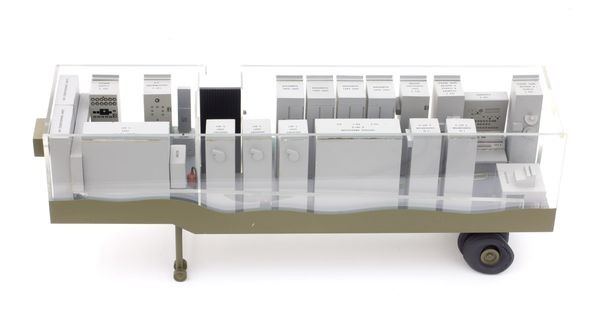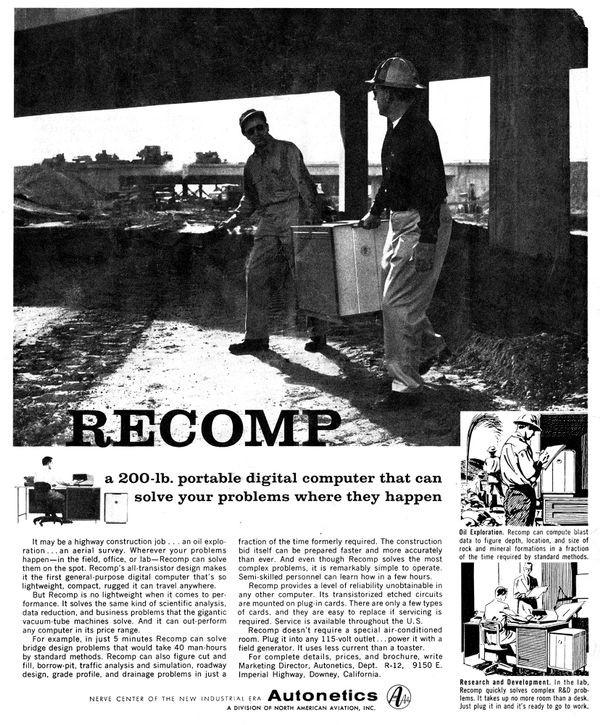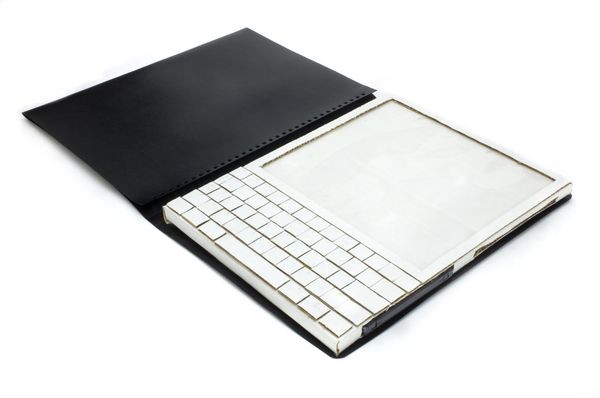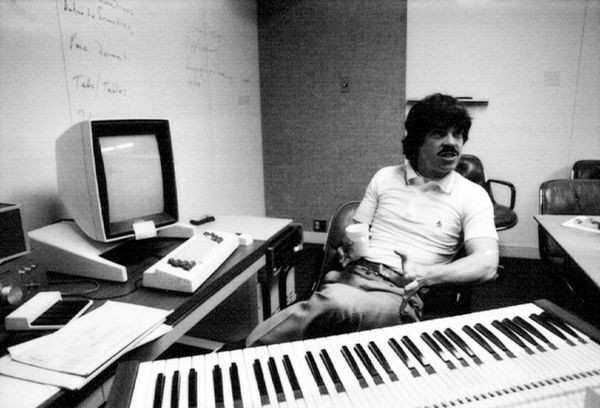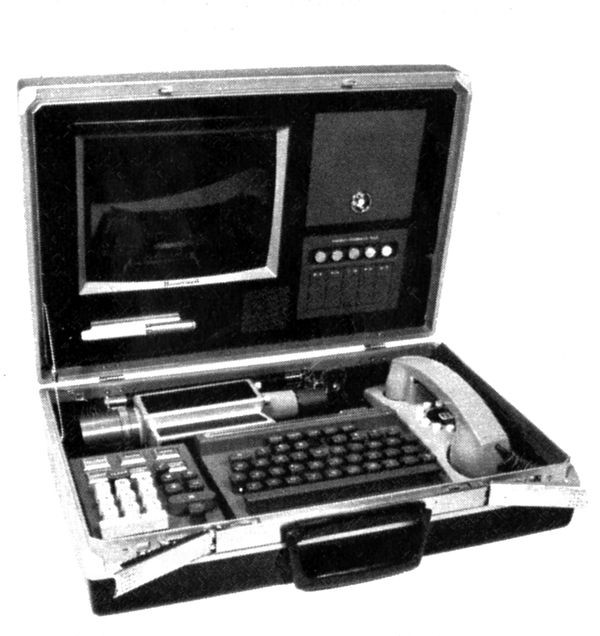Portable Computers
Model of U.S. Army MOBIDIC Mobile Digital Computer
MOBIDIC was mounted in a truck for field communications. It used advanced transistorized components because of their durability and light weight. MOBIDIC’s 1953 predecessor, the DYSEAC, required two trailers!
Portable Computers
In 1950, “portable” meant small enough for a ship or a truck, like the Army’s Mobile Digital Computer.
By 1980, miniaturization had made more convenient mobile computers possible. A “portable computer” became a mobile version of a desktop PC, complete with a full-sized keyboard.
Autonetics Recomp advertisement
The 200-pound Recomp was a transportable scientific digital computer made possible by the transistor. Some analog computers, like the suitcase-sized SkeduFlo, were also portable.
View Artifact DetailTraveling Terminals
Even when computers themselves weren’t mobile, computer users were. They accessed computers remotely with a terminal, a keyboard and printer (or screen) connected to the distant computer over a phone line.
The first terminals were stationary. By the 1960s they became briefcase-sized, letting business travelers connect from the road.
OMNITEC portable terminal advertisement
Mobile terminals were often promoted as macho high tech. Some ads showed them clutched by executives running for helicopters. Here a road warrior takes his to the Playboy club.
View Artifact DetailiXO Telecomputer
The iXO was a lightweight mobile terminal that let non-technical business users access remote data. Options included a printer and video interface that used a TV as a display.
View Artifact DetailInventing the Future
Few in the 1960s foresaw desktop PCs. Yet some visionaries were a step or two ahead.
Stanley Kubrick, directing 2001: A Space Odyssey, commissioned Honeywell to forecast future computing. Honeywell’s 1966 briefcase model included a phone and video camera. It predicted such computers would be available commercially in 15 years—spot on, except for the camera.
Researcher Alan Kay, believing “the best way to predict the future is to invent it,” mocked up a wirelessly connected tablet-like computer for kids in 1968. His “dynamic book,” or Dynabook, was among the most influential computers never built.
Model of the Dynabook “dynamic book” (replica by Alan Kay)
Alan Kay’s1968 Dynabook mockup was influenced by the learning theories of Jerome Bruner and Seymour Papert. Though too advanced to build at the time, it inspired future designers. Kay helped pioneer GUI and object-oriented programming at Xerox PARC.
View Artifact DetailAlan Kay
A father of the graphical user interface and object-oriented programming at Xerox PARC, Kay’s career has focused on computers as learning tools.
View Artifact DetailHoneywell mobile computing concept
Honeywell’s futuristic mobile computing concept for Kubrick’s 2001 included a computer, modem, telephone, TV camera and microfilmed documents—plus room for a deck of cards and contact lenses!
View Artifact DetailChildren using the proposed Dynabook (based on Alan Kay drawing)
Most features imagined for the Dynabook have now been built, including wired and wireless connectivity. But Kay’s vision of a mobile companion that would adjust to each child’s learning process remains elusive.
View Artifact Detail